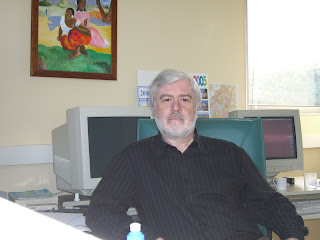Interferometric Detection of Gravitational Waves :
5 Needed Breakthroughs -- Jean-Yves Vinet
 [We are continuing our feature on '5-Breakthroughs' -- this time with inputs from Prof. Jean-Yves Vinet ....
[We are continuing our feature on '5-Breakthroughs' -- this time with inputs from Prof. Jean-Yves Vinet ....Jean-Yves Vinet was involved in the French-Italian Virgo project for the detection of gravitational waves since the very beginning (Year 1984!) as a collaborator of Alain Brillet, who, with A. Giazotto, promoted the idea of the Virgo project.
Regarding terrestrial instruments like Virgo or LIGO, his interest lies mainly in the theory of the instrument itself (optics, thermal noise, R&D for advanced instruments...). He is also involved in NASA's proposed space-based detector LISA where again he finds his interest in the instrument itself (transfer function, low frequency regime, time delay interferometry...) and also the data Analysis issues.
Jean-Yves is currently a "Directeur de Recherche" at C.N.R.S, France. He is a member of the LISA International Science Team and also of the Fundamental Physics committee of the Centre National d'Etudes Spatiales (the French space agency). He was a professor at Ecole Nationale de Techniques Avancées (Paris) (Laser Physics, 1991-99) and then a searcher at Département d'Astrophysique Relativiste (Observatoire de Paris-Meudon) (1999) and thereafter a searcher at Artemis (Observatoire de la Côte d'Azur, Nice, France) since 2000.
He teaches a master's course on Experimental Gravitation at Université de Nice-Sophia-Antipolis.
-- 2Physics.com Team]
"In my opinion, important breakthroughs would be for instance:
1) Find an optical design matched to light beams homogeneously distributed on the mirror surfaces in order to reduce the spurious thermal effects, the thermal noise and the thermodynamical noise.
2) Then find a laser able to produce such beams (fiber laser).
3) Adopt the continuous detection scheme (no modulation).
4) Organize a full cooperation among existing antennas (this seems to be on the way).
5) Get more funding for R&D (Europe!)"
Relevant links: Virgo Project LISA
Labels: 5-Breakthroughs, Gravitational Waves

0 Comments:
Post a Comment